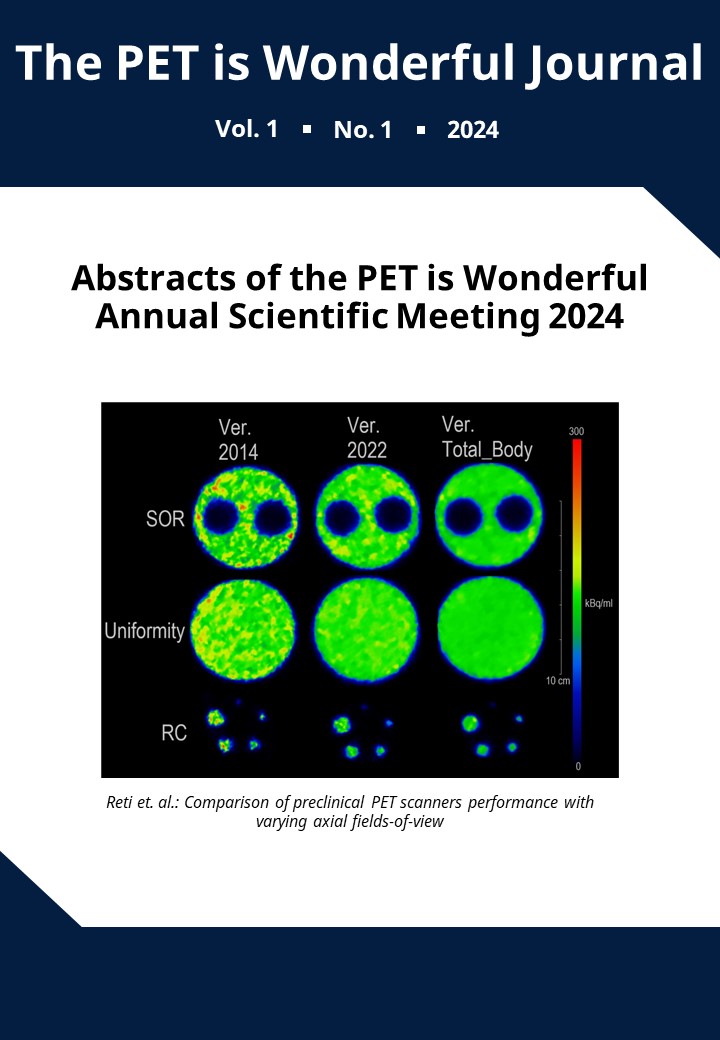[18F]FDG Brain Imaging Assessment in Preclinical Acute and Chronic Stress Models Using Statistical Parametric Mapping
DOI:
https://doi.org/10.2218/piwjournal.9818Resumo
Previous studies have used [18F]FDG as a biomarker for depression, anxiety, or chronic stress in cancer patients1,2. However, they lack specific brain patterns and assessment in preclinical models, limiting their translational potential. Hence, we set out to establish preclinical [18F]FDG brain PET as a method to evaluate stress in vivo.
Lean C57BL/6J mice were exposed to acute and chronic cooling, restraint, and surgical stress. Obese mice were on a high-fat diet for eight weeks and exposed to cooling and restraint stress. [18F]FDG was injected into fasted animals under brief isoflurane anesthesia via the tail vein. Following a 60-minute distribution phase during acute stress or one day after stress exposure (chronic), animals underwent static μPET/CT scans (Siemens® Inveon). Brain images were spatially normalized, and intensity normalization was performed using proportional and histogram-based scaling3 with PMOD (V. 3.8). Normalized images were analyzed using a brain atlas (M. Mirrione) to extract regional SUV and statistical parametric mapping (SPM12) for voxel-wise comparison.
Overall, in lean mice, total brain [18F]FDG-uptake was significantly reduced across all stress models except for acute restraint, whereas total uptake was unaffected in obese mice. Subsequent brain atlas analysis of lean mice revealed changes in regional uptake for all stressors except for chronic cooling, while obese mice were affected by only acute and chronic restraint. Using SPM, we validated stress-specific hypo- and hypermetabolic areas in the brains of lean mice upon acute cooling, acute and chronic restraint, and surgery and in obese mice after chronic restraint (see Figure). We also identified overlapping areas in the brain stem and hypothalamus region following acute cooling and surgery, possibly due to post-surgical hypothermia.
Our findings show that static [18F]FDG-imaging is a valuable tool for noninvasively assessing brain activity in a multitude of stress models and a suitable translational tool for stress research in mice.
Please click on the 'PDF' for the full abstract!
Downloads
Publicado
Edição
Secção
Licença
Direitos de Autor (c) 2024 Maximilian Krisch, Jayne Louise Wilson, Thomas Wanek, Paul Ettel, Claudia Kuntner, Oeykue Oezer, Thomas Weichhart, Cécile Philippe, Marcus Hacker, Chrysoula Vraka

Este trabalho encontra-se publicado com a Licença Internacional Creative Commons Atribuição 4.0.





